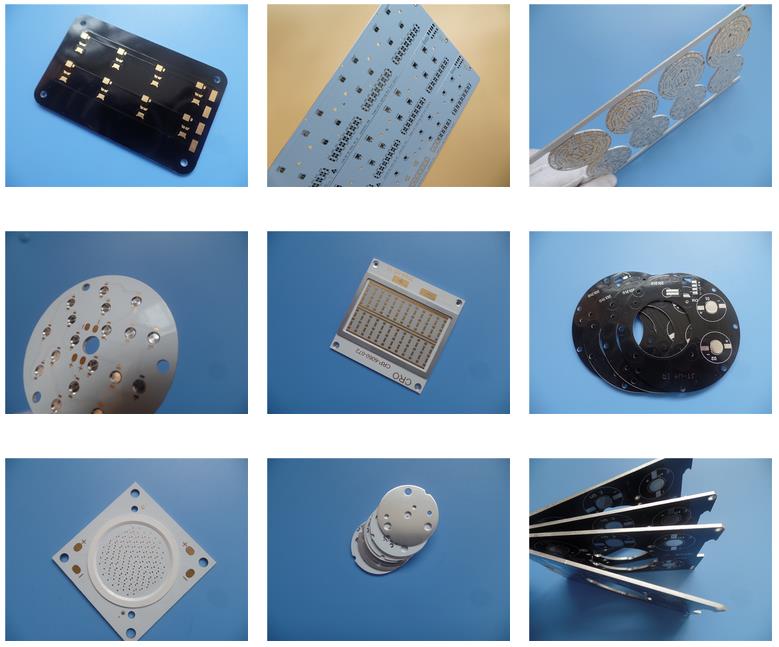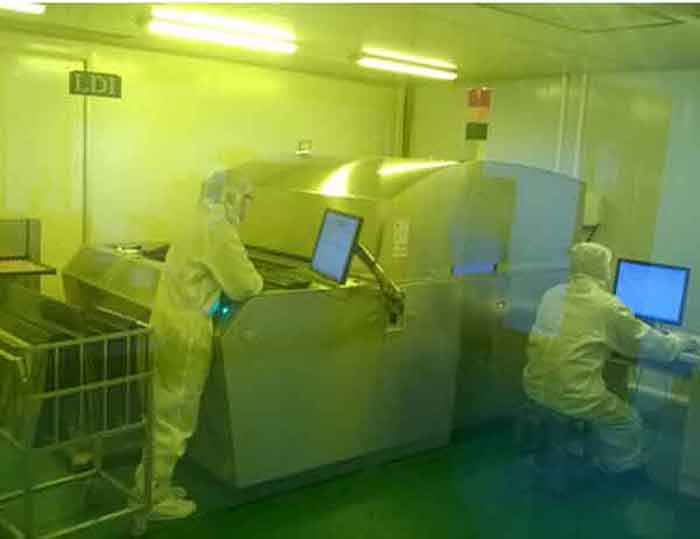| Surface Finishing: | Immersion Gold |
|---|---|
| Board Thickness: | 0.30mm |
| Copper Thickness: | 35 um |
| Base Material: | Polyimide 25um |
| Brand Name: | Bicheng Enterprise Limited |
| Min. Line Spacing: | N/A |
| Min. Line Width: | N/A |
| Min. Hole Size: | N/A |
| Model Number: | BIC-283-V283 |
| Place of Origin: | China (Mainland) |
| Coverlay Colour: | Black |
| Color of Silkscreen: | White |
| Function: | 100% Pass electrical test |
Quick Details
Specifications
Structure of FPC
According to the number of layers of conductive copper foil, FPC can be divided into single
Layer circuit, double layer circuit, multi-layer circuit, double sided and so on.
Single-layer structure: the flexible circuit of this structure is the simplest structure of the
Flexible PCB. Usually the base material (dielectric substrates) + transparent rubber(adhesive)
+ copper foil is a set of purchased raw materials(semi-manufactures), the protective film and
Transparent glue are another kind of bought raw material. First, copper foil must be etched to
Obtain the required circuit, and the protective film should be drilled to reveal the corresponding
Pad. after cleaning, the two are combined by rolling. Then the exposed part of the pad
Electroplated gold or tin to protect. In this way, the big panel board will be ready. Generally
Also it's stamped into the corresponding shape of the small circuit board. There is also no
Protective film directly on the copper foil, but printed resistance soldering coating, so that the
Cost will be lower, but the mechanical strength of the circuit board will become worse. unless
the strength requirement is not high and the price needs to be as low as possible, it is best to
Apply the protective film method.
Double layer structure: when the circuit is too complex to be wired, or copper foil is needed
to shield the ground, it is necessary to choose a double layer or even a multilayer. the most
Typical difference between a multilayer and a single plate is the addition of a perforated structure
to connect the layers of copper foil. the first process of transparent rubber + base material +
Copper foil is to make holes. Drill holes in the base material and copper foil first, clean and
Then plated with a certain thickness of copper. The subsequent fabrication process is almost
the same as the single-layer circuit.
Double sided structure: both sides of the double sided FPC have pads, mainly used to connect
Other circuit boards. Although it and monolayer structure is similar, but the manufacturing
Process is very different. Its raw material is copper foil, protective film and transparent glue.
the protective film should be drilled according to the position of the pad first, then the copper
Foil should be affixed, the pad and track lines should be etched and then the protective film of
Another drilled hole should be affixed.
FPC Case: 4-Layer Flexible Printed Circuit FPC Built on
Polyimide with Black Mask
(Flexible printed circuits are custom-made products, the picture and parameters shown are
Just for reference)
General description
this is a type of flexible printed circuit for the application of PLC Programing It's a 4 layer
FPC at 0.3mm thick. the base laminate is from ITEQ, It's fabricated per IPC 6012 Class 2
Using supplied Gerber data. Polyimide stiffener is applied on the inserting part.
Parameter and data sheet
Features and benefits
Excellent flexibility
Reducing the volume
Weight reduction
Consistency of assembly
Increased reliability
Controllability of electrical parameter design
the end can be whole soldered
Material optionality
Low cost
Continuity of processing
Focus on low to medium volume production
Make delivery on time. We keep higher than 98% on-time-delivery rate.
Application
Keypad FPC, FFC for industrial control equipment, consumer game consoles
Variety of PCBs

LDI equipment

According to the number of layers of conductive copper foil, FPC can be divided into single
Layer circuit, double layer circuit, multi-layer circuit, double sided and so on.
Single-layer structure: the flexible circuit of this structure is the simplest structure of the
Flexible PCB. Usually the base material (dielectric substrates) + transparent rubber(adhesive)
+ copper foil is a set of purchased raw materials(semi-manufactures), the protective film and
Transparent glue are another kind of bought raw material. First, copper foil must be etched to
Obtain the required circuit, and the protective film should be drilled to reveal the corresponding
Pad. after cleaning, the two are combined by rolling. Then the exposed part of the pad
Electroplated gold or tin to protect. In this way, the big panel board will be ready. Generally
Also it's stamped into the corresponding shape of the small circuit board. There is also no
Protective film directly on the copper foil, but printed resistance soldering coating, so that the
Cost will be lower, but the mechanical strength of the circuit board will become worse. unless
the strength requirement is not high and the price needs to be as low as possible, it is best to
Apply the protective film method.
Double layer structure: when the circuit is too complex to be wired, or copper foil is needed
to shield the ground, it is necessary to choose a double layer or even a multilayer. the most
Typical difference between a multilayer and a single plate is the addition of a perforated structure
to connect the layers of copper foil. the first process of transparent rubber + base material +
Copper foil is to make holes. Drill holes in the base material and copper foil first, clean and
Then plated with a certain thickness of copper. The subsequent fabrication process is almost
the same as the single-layer circuit.
Double sided structure: both sides of the double sided FPC have pads, mainly used to connect
Other circuit boards. Although it and monolayer structure is similar, but the manufacturing
Process is very different. Its raw material is copper foil, protective film and transparent glue.
the protective film should be drilled according to the position of the pad first, then the copper
Foil should be affixed, the pad and track lines should be etched and then the protective film of
Another drilled hole should be affixed.
FPC Case: 4-Layer Flexible Printed Circuit FPC Built on
Polyimide with Black Mask
(Flexible printed circuits are custom-made products, the picture and parameters shown are
Just for reference)
General description
this is a type of flexible printed circuit for the application of PLC Programing It's a 4 layer
FPC at 0.3mm thick. the base laminate is from ITEQ, It's fabricated per IPC 6012 Class 2
Using supplied Gerber data. Polyimide stiffener is applied on the inserting part.
Parameter and data sheet
| Size of Flexible PCB | 70.18 X 40.28mm |
| Number of Layers | 4 |
| Board Type | Flexible PCB |
| Board Thickness | 0.30mm |
| Board Material | Polyimide 25m |
| Board Material Supplier | ITEQ |
| Tg Value of Board Material | 60 |
| PTH Cu thickness | 20 m |
| Inner Iayer Cu thicknes | N/A |
| Surface Cu thickness | 35 m |
| Coverlay Colour | Black |
| Number of Coverlay | 2 |
| Thickness of Coverlay | 25 m |
| Stiffener Material | Polyimide |
| Stiffener Thickness | 0.2mm |
| Type of Silkscreen Ink | IJR-4000 MW300 |
| Supplier of Silkscreen | TAIYO |
| Color of Silkscreen | White |
| Number of Silkscreen | 1 |
| Peeling test of Coverlay | No peelable |
| Legend Adhesion | 3M 90 No peeling after Min. 3 times test |
| Surface Finish | Immersion Gold |
| Thickness of Nickle/Gold | Au: 0.03m(Min.); Ni 2-4m |
| RoHS Required | Yes |
| Famability | 94-V0 |
| Thermal Shock Test | Pass, -25125, 1000 cycles. |
| Thermal Stress | Pass, 3005,10 seconds, 3 cycles. No delamination, no Blistering. |
| Function | 100% Pass electrical test |
| Workmanship | Compliance with IPC-A-600H & IPC-6013C Class 2 |
Features and benefits
Excellent flexibility
Reducing the volume
Weight reduction
Consistency of assembly
Increased reliability
Controllability of electrical parameter design
the end can be whole soldered
Material optionality
Low cost
Continuity of processing
Focus on low to medium volume production
Make delivery on time. We keep higher than 98% on-time-delivery rate.
Application
Keypad FPC, FFC for industrial control equipment, consumer game consoles
Variety of PCBs
LDI equipment



